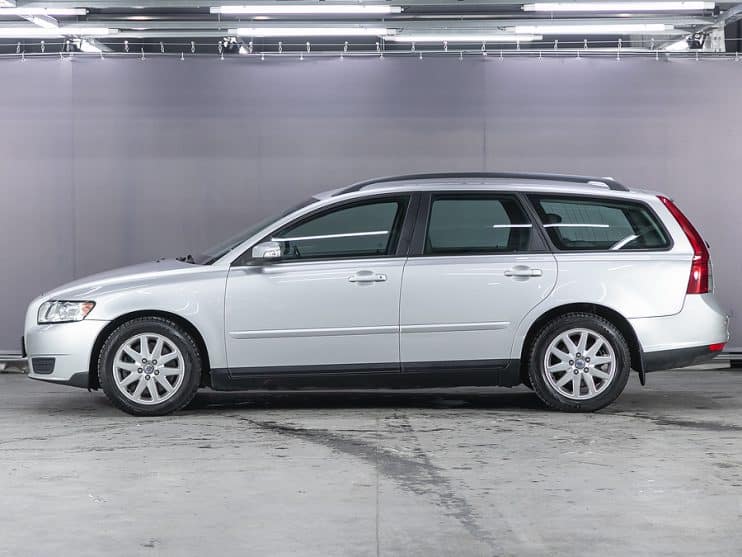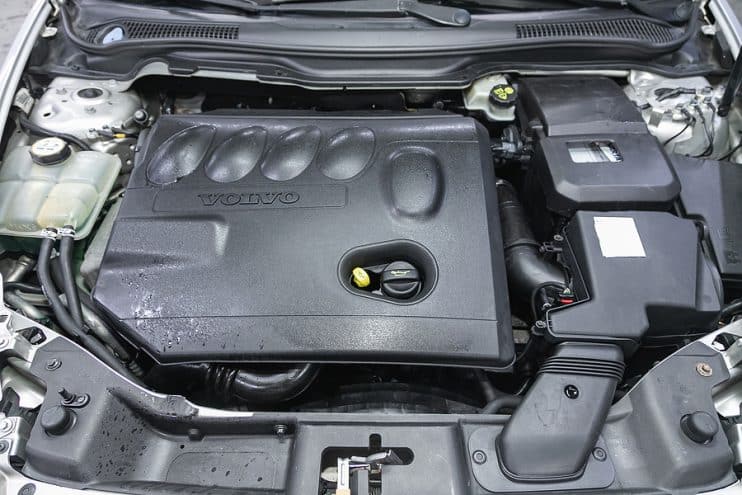
The Volvo V50 is a compact luxury estate car produced from 2004 to 2012. It was created as a successor to the Volvo V40 estate and it shared its platform with the second-generation Ford Focus. The V50 aimed to combine Volvo’s reputation for safety with a sporty design and more exciting driving experience.
Like any vehicle, the Volvo V50 has had its share of common issues reported by owners, including concerns with the air conditioning condenser, suspension parts, steering systems, timing belts and tensioners, to name a few.
Fortunately, Volvo spares and replacement components are still widely available, which makes ongoing maintenance relatively straightforward for owners and enthusiasts.
Here, we take a look at some of the most commonly reported problems with the Volvo V50 and give you an idea of its overall reliability as a used car option.
Table of contents:
What are the common faults of the Volvo V50?
While not all Volvo v50 models will experience these issues, here are some of the most common problems reported by drivers and owners:
Ride and handling problems
Suspension
Volvo V50 owners commonly experience issues with suspension components, particularly the lower control arms and drop links. These parts are crucial for maintaining stability and ride comfort.
Over time, the rubber bushings and ball joints in the control arms can wear out, leading to knocking noises when driving over bumps or rough surfaces. Worn drop links can also cause rattling or clunking sounds, and they can affect the vehicle’s handling and steering.
If suspension parts are worn out, replacing them promptly is essential to avoid damaging other components, such as the tyres and steering rack.
Steering
Owners of the V50 have reported high-pitched sounds or stiffness when turning the steering wheel. Issues with the power steering pump, steering rack, or steering column may cause these problems.
Some drivers have difficulty manoeuvring their V50 or experiencing an inconsistent steering response, especially at lower speeds. Addressing and fixing any steering-related concerns is important to ensure safety and prevent more extensive repairs.

Engine and drivetrain problems
Timing belt and tensioners
The timing belt and tensioners are critical components in the Volvo V50’s engine. They synchronise the rotation of the engine’s camshaft and crankshaft, ensuring proper valve timing.
V50 owners have found that the timing belt can wear out or stretch, potentially leading to catastrophic engine damage if it breaks while the engine is running.
Diesel Particulate Filter (DPF)
Diesel-powered Volvo V50 models have a Diesel Particulate Filter (DPF) designed to trap and burn off particulate matter from the exhaust gases. However, the filter can become clogged over time, especially during short trips or low-speed driving conditions when it doesn’t reach optimal temperatures for regeneration.
If you have a clogged DPF, you may notice reduced engine performance, increased fuel consumption, and possibly warning lights on the dashboard. To prevent any issues, Volvo v50 owners should regularly drive at motorway speeds to help the filter clean or regenerate, or take the V50 to a professional for a filter clean. If the DPF is severely clogged, it may need to be replaced to improve engine efficiency and ensure your emissions are manageable.
Turbocharger
Turbocharger issues are common in Volvo V50 models with turbocharged engines. Drivers report symptoms such as white smoke from the exhaust, reduced engine power, or abnormal noises during acceleration.
These turbocharger failures can occur due to oil leaks, bearing wear, or compressor/turbine damage. Regular oil changes using manufacturer-approved oil and adhering to service intervals can help prolong turbocharger life. Depending on the extent of damage, repairing or replacing the turbocharger can be expensive.

Oil consumption/leaks
Volvo V50s are sometimes prone to excessive oil consumption and leaks, particularly as they age or if owners don’t perform the proper maintenance. Commonly reported areas for oil leaks include valve cover gaskets, oil pan gaskets, and seals around the engine.
Excessive oil consumption can sometimes indicate internal engine wear or faulty seals. Owners may notice oil puddles under the vehicle when parked or a decrease in oil levels between scheduled oil changes.
Transmission
Transmission issues in the Volvo V50 can be rough shifting, delayed engagement, or transmission fluid leaks.
Drivers report automatic transmissions slipping or hesitation during acceleration, while manual transmission drivers report grinding sounds or difficulty shifting gears. These problems can affect the car’s performance and feel.
Problems with the gearbox can be caused by low fluid levels, worn clutch packs, or faulty solenoids.
Other
Air conditioning condenser
The air conditioning condenser in the Volvo V50 is an area of concern, particularly in older models. Over time, owners have found that the condenser can develop leaks or fail due to corrosion or damage.
When the condenser malfunctions, the vehicle experiences reduced cooling efficiency or complete loss of air conditioning. Repairing or replacing the condenser can be expensive, often requiring specialised tools and expertise.
Owners may notice symptoms such as warmer air blowing from vents or unusual noises from the compressor.

What to consider when purchasing a Volvo V50
Is the Volvo V50 reliable?
The Volvo V50 presents a mixed picture in terms of reliability, mainly due to its age and performance. Being an older model, it isn’t included in recent reliability surveys, which may leave potential buyers relying on anecdotal evidence and historical data.
However, Volvo has maintained a solid reputation as a brand, ranking above luxury competitors like Mercedes-Benz and Jaguar in reliability assessments. The V50 benefits from reliable engine choices and a well-regarded chassis that offers comfort and good handling. Despite its age, the V50 continues to hold its value well in the used car market, so it has an enduring appeal and a reputation for reliability among owners.
Which Volvo V50 should you buy?
Choosing the right Volvo V50 depends on your driving preferences and priorities. The D4 diesel model in SE trim stands out for its overall versatility and balanced performance. It offers enough power for daily driving, excellent fuel efficiency, and a luxurious interior package.
If towing capability is important, the D5 provides strong low-end torque, though at a slightly higher fuel consumption rate than the D4. Drivers who prefer petrol engines should consider the 2.0-litre option, which strikes a good balance between performance and running costs.
For a more exciting driving experience, the T5 version offers significant horsepower and acceleration, making it the fastest option in the V50 lineup. However, if you’re thinking of buying one, be mindful of its higher fuel consumption and the cost of replacing components with new or used Volvo V50 parts.







.png)